EPA Challenges & Prizes (Prior to 2019)

On this page:
Air
My Air, My Health Challenge

This challenge asked participants to submit ideas for personal devices to collect both air quality and physiological data to examine the link between environmental and personal health. (challenge year: 2012)
Stand Alone Field Measurement of Atmospheric Benzene & Butadiene
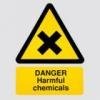
Design sensitive, reproducible and rapid field-based monitoring systems that measured atmospheric benzene and 1,3 butadiene at low concentrations. (challenge year: 2012)
Wildland Fire Sensors Challenge

EPA and five other federal agencies issued this challenge to improve smoke monitoring and provide data to protect public health. Sensor developers and researchers were encouraged to develop new and innovative air sensor monitoring technologies to measure air pollutants from smoke during wildland fires. (challenge year: 2017)
Water
Algal Bloom Photo Contest
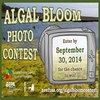
Facebook and Instagram were used to document algal blooms spotted in waters. Contestants submitted photos of algal blooms where they live, vacation, and recreate with a hashtag. (challenge year: 2014)
Campus RainWorks Challenge

This is a green infrastructure design competition for American colleges and universities that seeks to engage with the next generation of environmental professionals, foster a dialogue about effective stormwater management, and showcase the environmental, economic, and social benefits of green infrastructure practices. The challenge is hosted annually. (challenge years: 2012 - 2019)
Challenging Nutrients
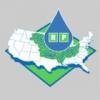
Participants were asked to submit innovative, next-generation ideas that could lead to a fundamental change in the way we manage or recover nutrients. (challenge year: 2013)
Efficient Technologies/ Methodologies for Measuring the Reduction of Pollution from Nonpoint Sources
The goal of this challenge was to develop or identify technologies and methodologies to measure the performance of management systems that would reduce nitrogen, phosphorous, and/or sediment pollution loads. (challenge year: 2011)
National Aquatic Resource Surveys Campus Research Challenge
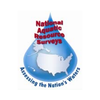
This challenge encouraged students to develop proposals for research projects that find innovative was to use National Aquatic Resource Survey data about the condition of the nation's waterways. The goal was to enhance external, innovative research and information development to support enhanced water management at multiple scales. (challenge year: 2014)
Nutrient Sensor Challenge - Phase 1

The Nutrient Sensor Challenge aimed to accelerate the development, production, and use of affordable, reliable, and accurate nutrient sensors. These sensors will enable automated and high-resolution nutrient monitoring in aquatic environments ranging from freshwater lakes and streams to the coastal ocean. (challenge year: 2014)
Nutrient Sensor Challenge - Phase 2

Sensor-developer teams from Phase 1 of the challenge were asked to submit applications for final verification testing of nitrogen and phosphorus sensors. (challenge year: 2015)
Real-Time Sensor to Monitor Sewer Overflows
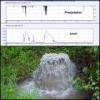
This challenge looked for ideas for an efficient, low-cost and low-maintenance real-time sensor to monitor sewer overflows in urban areas. This information can help monitor local waterways and characterize wet-weather impact on urban sewers. (challenge year: 2013)
Visualizing Nutrients Challenge

The USGS, US EPA, and Blue Legacy International challenge Solvers to utilize open government data sources to create compelling, innovative, and comprehensible visualizations that inform individuals and communities on nutrient pollution and inspire them to take action. (challenge year: 2015)
Visualize Your Water
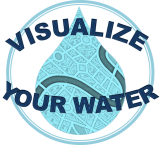
In collaboration with U.S. Geological Survey, high school students in the Great Lakes and Chesapeake Bay States are challenged to use open government data sources to create compelling, innovative, and comprehensible visualizations. (challenge year: 2016)
Chemicals
Detection and Analysis of Ambient Concentrations of Acrolein
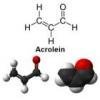
The challenge was about finding methods for low-cost, rapid-analysis detection of trace quantities of acrolein in the atmosphere. (challenge year: 2011)
National Radon Poster Contest
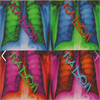
Student leaders raised radon awareness among their family, school and community by submitting posters depicting key information about radon. (challenge years: 2007 - 2015)
Presidential Green Chemistry Challenge

The awards recognized innovative technologies that incorporate green chemistry into chemical design, manufacture and use and help advance the protection of human health and the environment. (challenge year: 1996 - 2014)
Tracking Molecular Components of Electronics

This ideation challenge looked at identifying concepts that could enable the development of a "molecular bill of materials" for electronic products and components. This could help consumers be more aware of the chemicals used in everyday electronic devices. (challenge year: 2012)
Transform Tox Testing Stage 1

EPA and the National Institutes of Health launched a challenge that will award up to $1 million to improve the relevance and predictivity of data generated from automated chemical screening technology used for toxicity testing. (challenge year: 2016)
Transform Tox Testing Challenge Stage 2
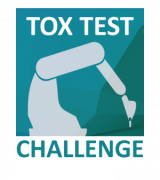
EPA and the National Institutes of Health(NIH) launched a challenge awarding up to $1 million to improve the relevance and predictivity of data generated from automated chemical screening technology used for toxicity testing.
TRI University Challenge

EPA issued this challenge to the academic community to find new, innovative, and creative ways to use Toxics Release Inventory (TRI) data and related information to promote more informed decision-making and action on the part of communities, manufacturers, and government. (challenge years: 2013 - 2016)
Waste Management
Game Day Recycling Challenge
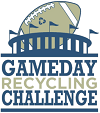
Colleges and universities participated by promoting waste reduction at their home football games. They can then and track and report waste reductions as they implement waste reduction strategies. (challenge years: 2010 - 2014)
Other
Apps for the Environment Challenge

Participants in this challenge looked at publicly available EPA data to come up with the most innovative way to use, show, or combine the data in an app. The goal was to find creative ways to think about what data EPA collects, how it is used, and increase public understanding of that data. (challenge year: 2011)
It's My Environment Video Project
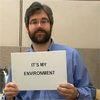
Participants were asked to share a video clip up to 10 seconds long of someone doing something for the environment, then reading and passing along a sign that says "It's My Environment." (challenge year: 2011)
Recovering Bacillus Spores from Swabs

Participants submitted protocols for efficient recovery of bacterial spores from pre-wetted surface sampling tools. This will allow for more effective detection and quantification of hazardous biological materials before they become a public health risk. (challenge year: 2012)
Regulations.gov Data Challenge

Used TopCoder to receive an application that makes regulations of interest more discoverable and provide commenters with useful information. (challenge year: 2016)
Six Words for the Planet

Participants celebrated the environment by sharing flash fiction: six-word essays about what the environment means to them. Submissions could be shared on EPA social media and published in Smith Magazine. (challenge year: 2012)
State of the Environment Photo Project
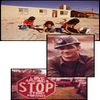
This project featured photos designed to showcase our lives and our planet and was open from Earth Day 2011 through 2013. Photos were showcased on Flickr for people to view. (challenge years: 2011 - 2013)
SunWise with SHADE Poster Contest
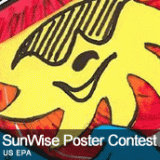
This challenge encouraged young students (K-8) to submit original, creative posters illustrating ways to prevent skin cancer and raise sun safety awareness. (challenge years: 2012 - 2014)
